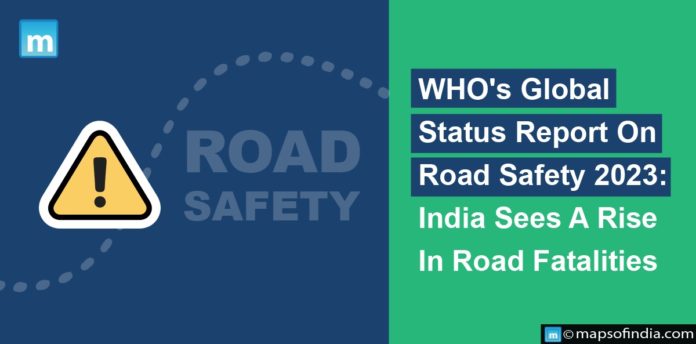The World Health Organization’s (WHO) Global Status Report on Road Safety 2023 provides a grim assessment of the world’s road safety situation. While there has been a decline in road traffic deaths to 1.19 million per year, the cost remains enormous, particularly in low- and middle-income nations.
Let us look into the findings of the research, with an emphasis on India:
India’s Rise in Road Fatalities
With its growing population and strong economic growth, India has seen a tremendous increase in automobile ownership. However, this increase in mobility has come at a cost: an alarming number of road accidents and fatalities. According to this report, India is responsible for 13% of worldwide road traffic deaths, an increase from 11%. This amounts to 1.54 lakh lives lost on Indian roads in 2021, a 15% increase from 2010, which had 1.34 lakh fatalities. The report emphasizes how vehicle accidents disproportionately affect vulnerable road users (VRUs) such as pedestrians, cyclists, and motorcyclists. VRUs account for roughly 54% of all road deaths in India, with pedestrians alone accounting for 34%. It emphasizes the necessity for infrastructure construction that prioritizes pedestrian, bicycle, and public transportation safety.
Factors Fueling India’s Road Safety Crisis
-
Inadequate road infrastructure
Poorly maintained roads, a lack of defined lanes for VRUs, and insufficient signage all play a role in accidents.
-
Disregard for traffic rules
Overspeeding, intoxicated driving and the failure to wear helmets and seatbelts are all common causes, placing road users in danger.
-
Ineffective enforcement of traffic laws
Road safety rules tend to be hampered by ineffective enforcement systems and corruption.
The Path Forward
To overcome these problems, the WHO study promotes a “Safe System” approach. This strategy is built on five pillars: safer roads, safer automobiles, safer speeds, safer road users, and post-crash care. India has taken several initiatives to improve road safety, including implementing the Motor Vehicles (Amendment) Act 2019 and investing in highway infrastructure development. However, continuous efforts across all pillars are required to significantly reduce traffic accidents and fatalities. The following are some major areas for action:
-
Strengthening traffic law enforcement
This includes enhancing traffic enforcement by imposing harsher penalties for traffic offenses and enhancing enforcement tools.
-
Investing in road infrastructure
This includes constructing and maintaining safe roadways with designated lanes for pedestrians, cyclists, and public transportation.
-
Increasing public understanding and education
This involves raising public knowledge of traffic safety laws and regulations through campaigns and instructional initiatives.
-
Encouraging the use of safer vehicles
This involves mandating safety features such as airbags and anti-lock brakes and pushing the use of electric vehicles.
-
Improving post-crash care
Authorities should focus on improving emergency medical services and trauma care facilities nationwide. The road safety situation in India is complicated and requires a multi-pronged response. India can make its roads safer for all its residents by implementing the WHO report’s recommendations and creating a comprehensive “Safe System” approach. This would save lives and help economic development by lowering the economic burden of traffic accidents.




